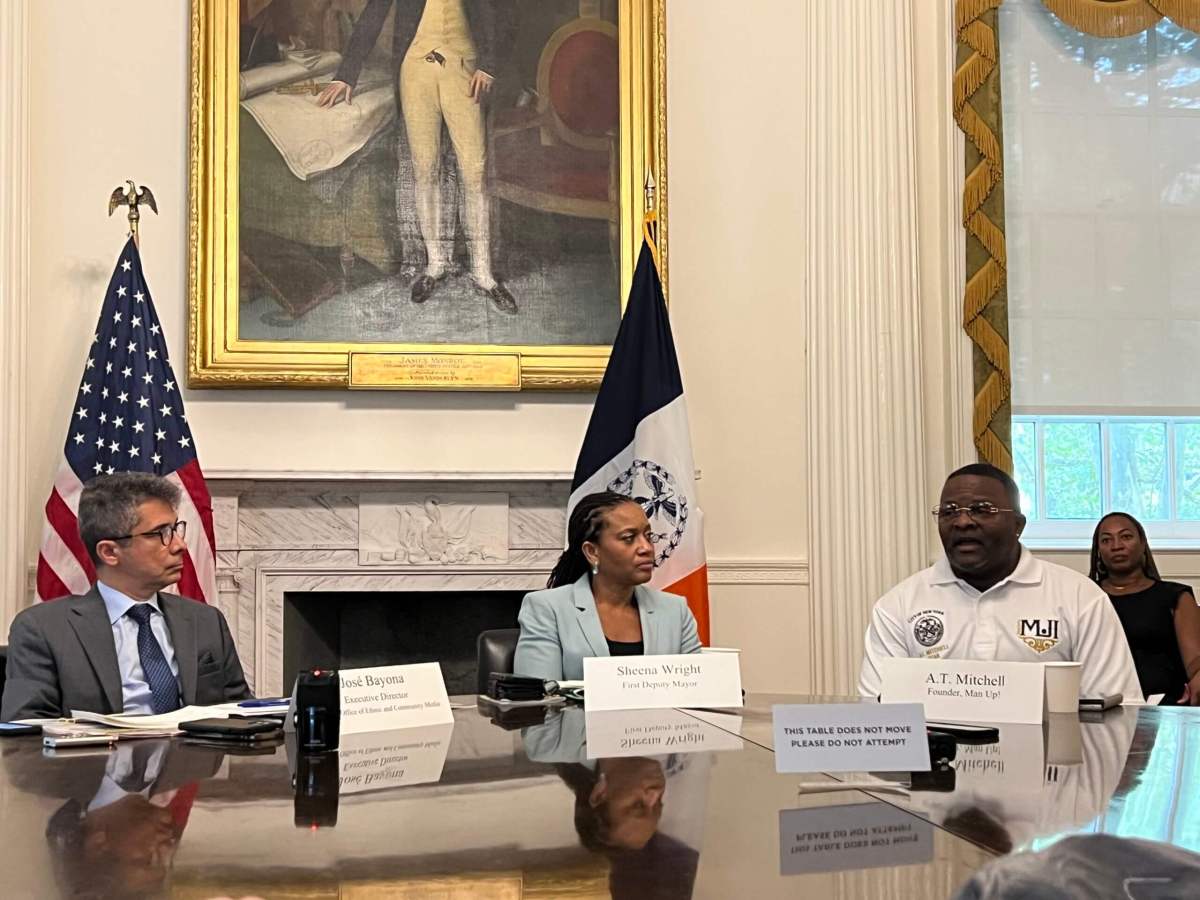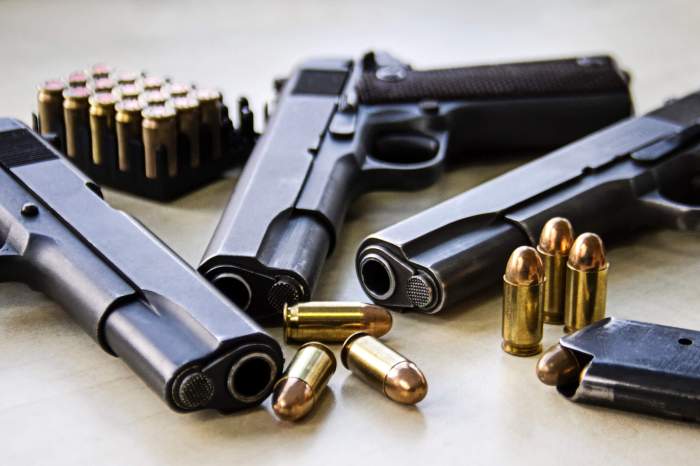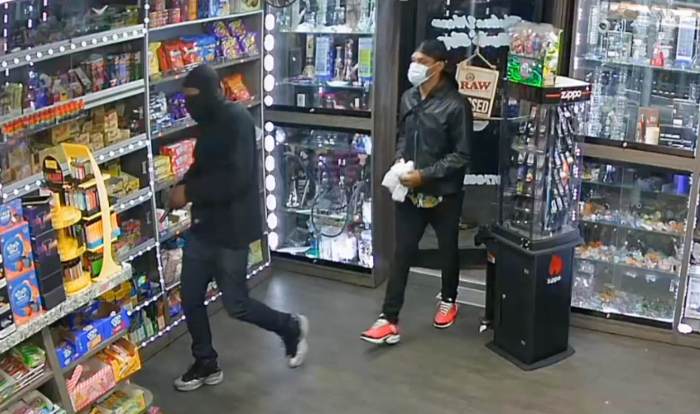Mayor Eric Adams’ plan to reduce gun violence across New York City has now rolled out in daily phases as of Aug. 10 — tackling issues that lie at the root of gun violence: housing, employment, and mental health.
First Deputy Mayor Sheena Wright and CEO of Man Up! Inc. A.T. Mitchell, who Adams selected as co-chairs in June 2022, explained the action plan during a media roundtable on Thursday, sharing more details about the $485 million dollar gun violence prevention plan, and answering questions from community and ethnic media outlets.
“We have been doing work over time, but now it’s full on,” Wright said. “We’ve identified half a billion dollars of resources that are going to be invested across these strategies and these neighborhoods and communities over the next several years. We’re expecting results.”
The co-chairs went over the solutions the city will be rolling out in phases, including utilizing the city’s Crisis Management System, holding community CompStat meetings in the six targeted precincts in the Bronx and Brooklyn, and creating a real-time public safety data dashboard.
“There’s an operational plan that’s in place and infrastructure staff that’s going to be managing that execution of the plan,” Wright said. “We’ll be monitoring it every day.”
Wright and Mitchell have acknowledged that “an all-hands-on-deck effort is needed to face the challenges of gun violence” and that the city’s blueprint for preventing it is now being rolled out. Mitchell also pointed to the media playing a role in the city’s united force against gun violence.
The seven encompassing solutions established by the gun violence task force are: early intervention, housing, navigation and benefits, community vitality, employment and entrepreneurship, trauma-informed care, and community and police relations.
“We organized them in a real framework that are evidence-based strategies,” Wright said. “They basically are the things that make a community well and healthy: housing, opportunities to work and to decrease unemployment, deal with mental health issues, and have trauma-informed care.”
The city will track how successful the plan’s implementation is based on data gathered on the number of people shot, shooting incidents, number of gun shots fired, the rate of assault hospitalizations per 100,000 residents, and the percentage of residents who feels safe from crime in the neighborhood.
Different approach from previous mayors
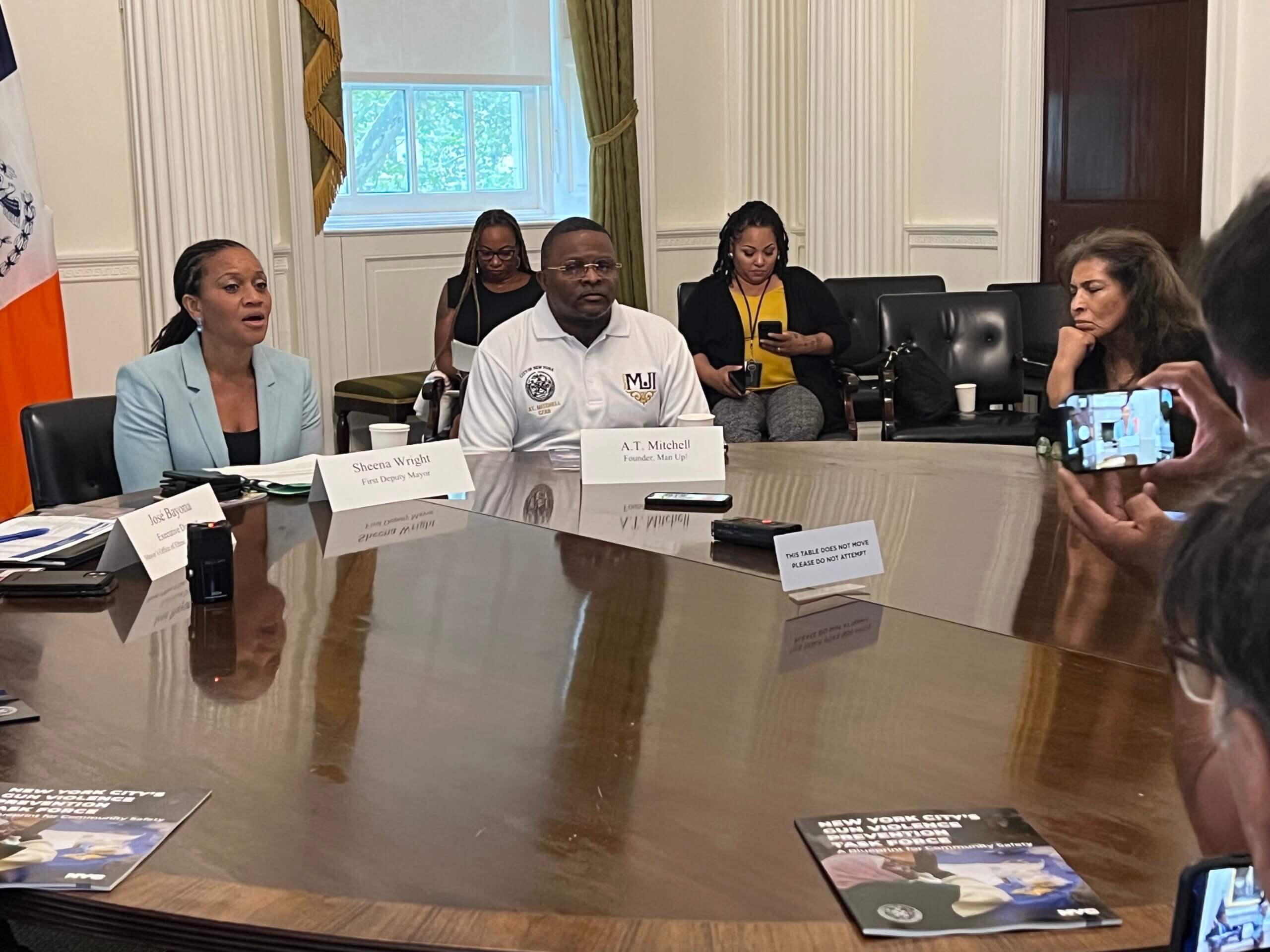
Mitchell, who grew up in Brownsville and East New York, was also part of the gun violence task force under former Mayor Michael Bloomberg. Mitchell told reporters Thursday that Adams’ approach to reducing gun violence is different in several ways.
“Before he was elected mayor, he was very familiar with the work that was being done in the trenches of our city,” Mitchell said. “He decided to elevate a member of the community to literally go out and find someone who’s on the ground every single day and night, that’s out there operating as an entity and leading the charge on this issue of gun violence that he knew of for so long.”
He pointed to the decision to rely on stakeholders who already had boots-on-the-ground in neighborhoods that have historically clocked in high rates of gun violence and continue to be at risk.
“We went on tour, so to speak,” Mitchell said. “We went literally to the six precincts that are a part of the first phase, and we had community convening with community members.””We’re going to be working on the ground in communities and making sure that we’re accountable to the results,” Wright said. “If we find that there are things we should do differently, we’re going to evolve and get better and better and better.”
Concentrated violence
Roughly 92% of all of the gun violence in New York City is concentrated within 30 precincts, according to the gun violence task force. Six of those precincts, which collectively produced 25% of shooting incidents and 39% of confirmed gunshots in 2022, were selected to be part of the first roll-out of the blueprint.
Four of the precincts are in the Bronx: the 40th Precinct (Port Morris, Mott Haven, Melrose), the 42nd Precinct (Morrisania, Claremont, Crotona Park), the 44th Precinct (Grand Concourse, Bronx Terminal Market, Yankee Stadium), and the 47th Precinct (Wakefield, Woodlawn, Baychester, Williamsbridge).
The other two precincts are in Brooklyn: the 73rd Precinct (Brownsville and Ocean Hill) and the 75th Precinct (East New York and Cypress Hills).
Homcide is the leading cause of death in all of these precincts, per the gun violence task force. These six precincts, comprised of predominantly Black and Brown residents, also experience disproportionately high rates of childhood poverty, chronic student absenteeism, juvenile detention, rent burdens, income inequality, poor health, and unemployment.
Mitchell said that as both a lifelong Brownsville and East New York community member, he often times felt “slighted and deprived of the resources, the opportunities that this great city musters up every single year in its budget.”
“These communities have suffered decades of disinvestment,” Mitchell said. “So we can’t expect miracles to happen overnight.”
Working with violence interrupters
amNewYork Metro asked Wright and Mitchell to discuss employment opportunities for violence interrupters — people hired to act as messengers and conflict mediators to reduce violence — and brought up a gun violence prevention model in the city of Richmond, CA, which provides financial stipends and fellowships to gun violence offenders to intervene with people at risk of perpetrating gun violence in the neighborhoods they come from.
In the four years after the Richmond gun violence prevention model was implemented, the city recorded the lowest number of firearm assaults and homicides in more than three decades, according to city of Richmond’s Office of Neighborhood Safety.
Mitchell said that the Cure Violence Global model, initially launched in Chicago in 2000, is “the core of the crisis management system.” The model encompasses violence interrupters, and said their job is to “stop the bleeding.”
“The Cure Violence Global was a model that we felt most comfortable with here in New York to adopt,” Mitchell said. “We scoured out communities for members of the community, some of which have “been there and done that” themselves. We asked them to come on to the other side of the fence and be a partner with us.”
He added that that applying the Cure Violence Global model has “been one of the biggest game changers of our experience.” Violence interrupters have been shown to help reduce gun violence in their communities, while also being paid living wages to become part of the ecosystem of public safety, said Mitchell.
“For example, the mere fact that I can go to a gang member or a former gang member, and ask him or her if they’re willing to help us change the conditions of the neighborhood by first and foremost offering them a paid, employment opportunity,” Mitchell said. “When they do agree, they come in, and then they are trained on the model.”
The violence interrupters, of which Mitchell said there are are roughly 400 now, will undergo “countless hours of training” becoming trained and certified and then deployed back into their neighborhoods, where they will use their influence and knowledge of their community to help the city reach other individuals who are involved in or at risk of gun violence.
“Our job has been to simply make contact, develop relationships of trust, to get them to come in,” Mitchell said. “Then we create what we call risk reduction plans with these individuals.”
Wright shared an example of how a violence interrupter would intervene after a shooting at a hospital. She said that the violence interrupter would focus on the retaliation that tends to happen during conflicts.
“Say someone is shot and they’re in the hospital, someone from the crisis management system will go to the hospital,” Wright said. “That interrupter is literally at the hospital saying, “Listen, we got to stop this beef. Let’s figure out what we need to do.””
Violence interrupters will engage in those mediation and conflict resolution on a daily basis, Wright said. She said this kind of work “stops so many more shootings and deaths because they are doing that really critical work.”
She said that the task force aims to reach individuals who are “the most trusted people in those community groups” who can connect with at-risk individuals and guide them in the right direction.
“They’re the ones that can connect them to services, support, interventions, opportunities way before they get into that gunplay,” Wright said.
“Once we’re able to maintain days of peace, we’re able to apply wraparound services and all of the resources that not only that individual, but that individual’s family, needs,” Mitchell said. “We have benefits that family members are able to take advantage of in the city.”
Creating neighborhood alliances
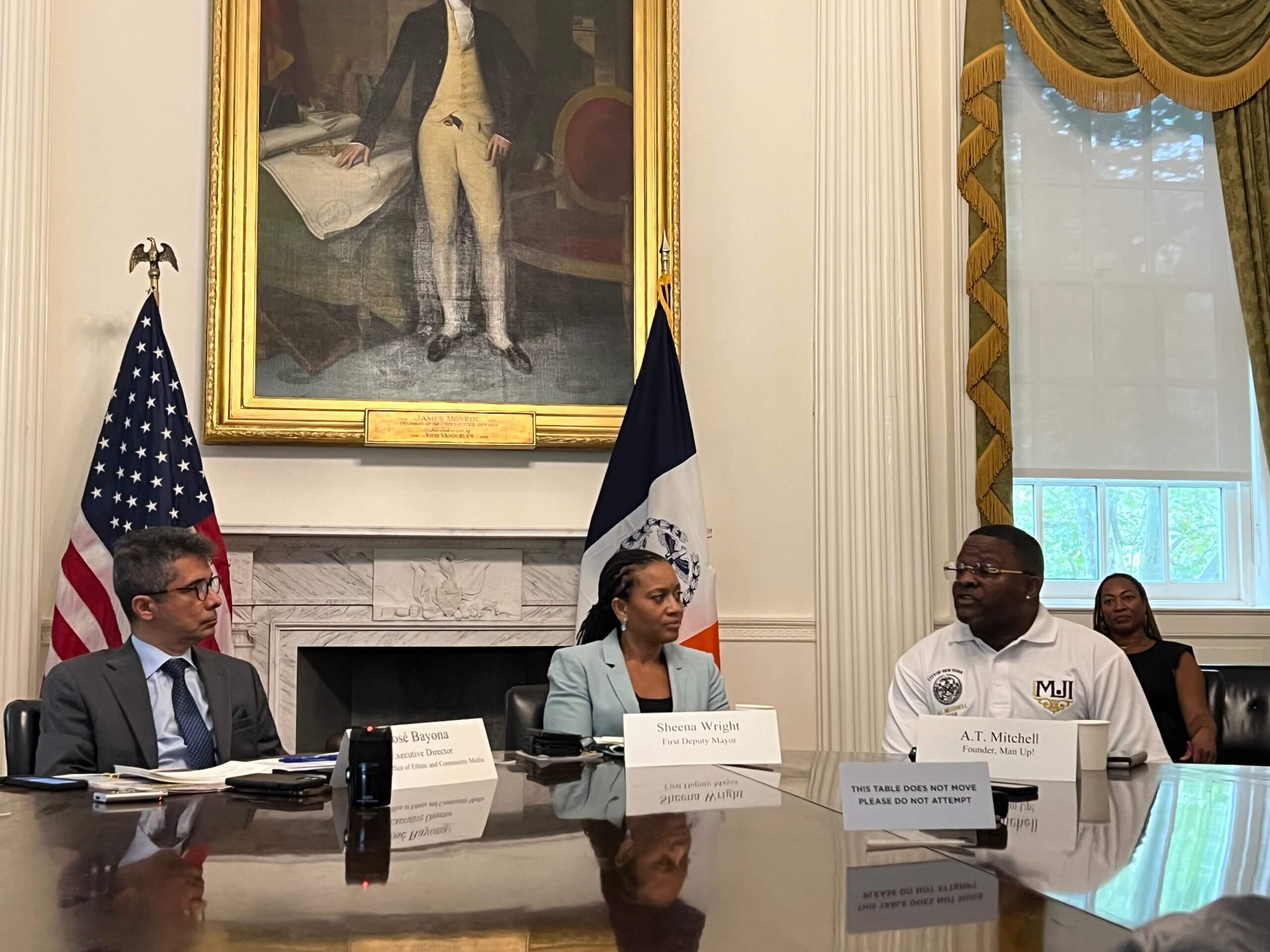
To continue the work on the ground, Wright said that every precinct will have a Neighborhood Safety Alliance comprised of neighborhood residents and stakeholders who deeply understand the needs of that neighborhood. The alliance will be meeting regularly and will be reporting back to City Hall with every deputy mayor and commissioner who oversees a particular element of the blueprint.
“So for instance, a plan in Brownsville will say community vitality is just one of the priorities that we need to fix this park and that park and that playground,” Wright said. “This group is going to say, “You’re going to do it by next April.””
The task force will also double down on creating “safe corridors” for young people and students so that they don’t have a fear of going to and from school and can focus on education.
“We’re working with the kids that the schools are telling us that are problematic and having rough days and times, maybe absenteeism,” Mitchell said. “We are planning on getting mentors to be working with these young people and their families.”
Mitchell said that the task force intends to “evaluate our work pretty much daily” and focus and measure the key performance indicators that demonstrate how successful or unsuccessful the city’s plan is.
“There’s going to be accountability,” Wright said. “We believe in continuous improvement. And when we find what we thought was going to work is not working, we’re going to be focused on what do we need to do differently.”
“Now comes the part where we we go into implementation,” Mitchell said. “The communities that we have been targeting have been waiting so long for these resources to come their way and help them in their daily lives. They’re counting on this administration on getting this right.”



